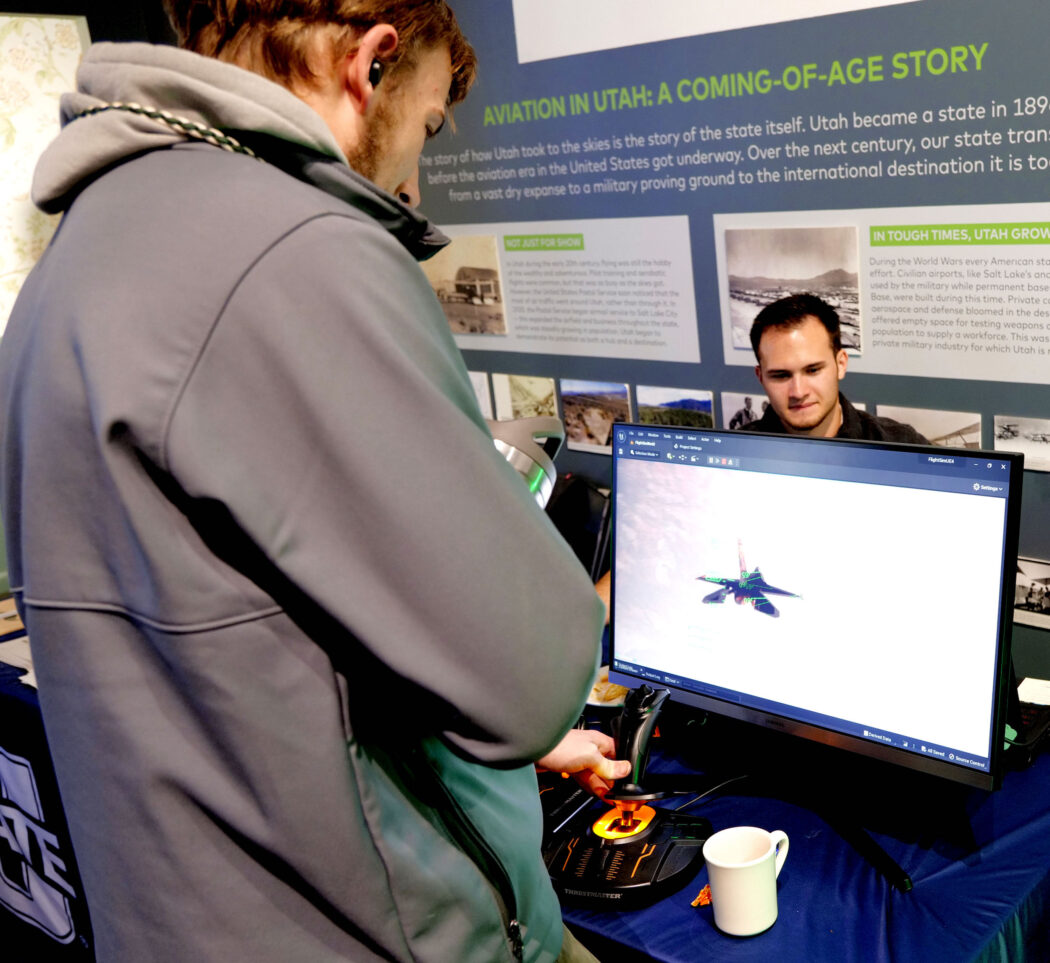USU engineering takes flight at The Leonardo
The Leonardo, a science and art museum in downtown Salt Lake City, welcomed all Utah State University alumni, faculty, and students for free on Saturday, Nov. 4.
According to their website, the USU College of Engineering is the new title sponsor and official education partner for the museum’s flagship exhibit, FLIGHT: The Next Leg.
Nov. 4 marked the grand opening for USU’s research projects to be featured in the exhibit.
According to Justin Anderson, director of marketing and events at The museum, the exhibit will progressively showcase more USU student projects as time goes on and hand out swag.
On Saturday, ambassadors for the college of Engineering answered questions visitors had about the program.
“I think it’s so cool that we’re partnered with The Leonardo,” said Ivy Gowans, one of the ambassadors.
Aries Erickson, another ambassador, said, “This event is going great. There’s a lot of turnout.”
According to Erickson and Gowans, there were a lot of alumni who came to the event with their children.
“We’ve had a few high school students come through to get some information on the program and talk to us,” Erickson said.
Ashton Gilbert, a student in the College of Engineering, was working at a booth showcasing a simulation he created. The simulation allowed guests to fly an F-16 fighter jet with no vertical tail. The research project is called BIRE, Biologically Inspired Rotating Empennage.
“To allow the planes to fly without a vertical tail, we’re rotating the whole back end around so it’ll end up flying like birds,” Gilbert said.
The design change increases the stealth of the aircraft.
“Without a vertical tail, the plane will not show up as easily on surveillance scans,” said Michael Van Shaar another engineering student.
However, Gilbert is still working on the control panel for the plane. As of now, the plane launches into an endless spiral without any way to control its movements.
“But that’s what we’re working on,” Gilbert said. “Eventually we’ll convert these models and cut off the tail to fly like that.”
Before they practice on real planes, they are able to test everything in the simulator, according to Gilbert. The current schedule accounts for the research project to be completed next summer.
Another interactive display was a kiosk displaying “WingCraft: Design Your Flying Marvel!” Gilbert called it a “kid version video game.”
The software allowed users to design their own airplane wings, then test if their creation would fly in real-life situations.
Also up for display was a large white wing, which was part of a recently finished research project, according to Gilbert.
A list of all the exhibits with detailed information can be found on USU’s Aerolab website, along with the WingCraft software.
Within The Leonardo’s gift shop, visitors can purchase USU College of Engineering memorabilia, including shirts, blankets, and hats.

